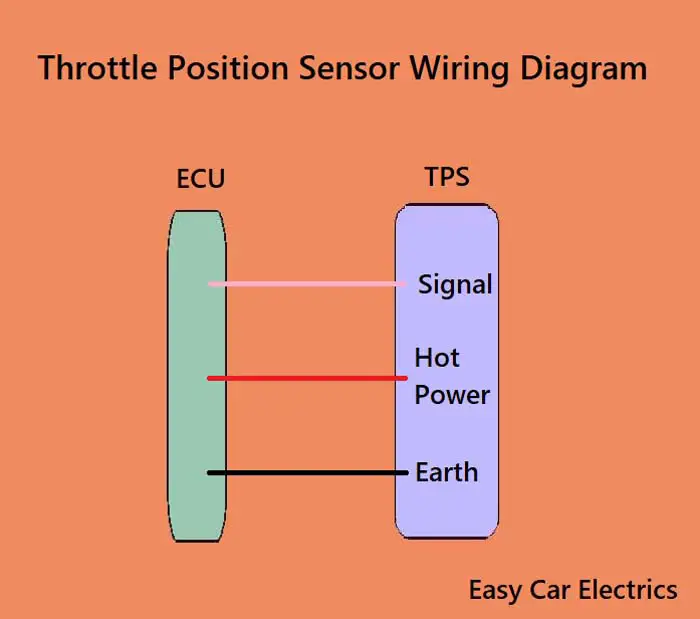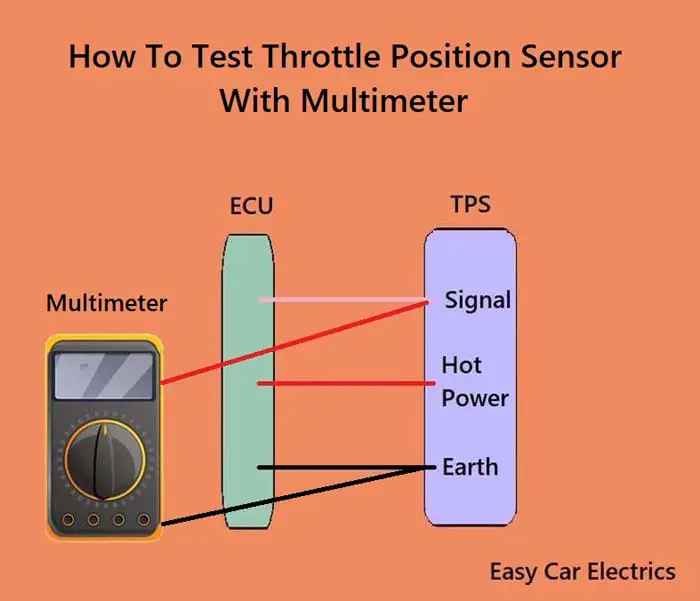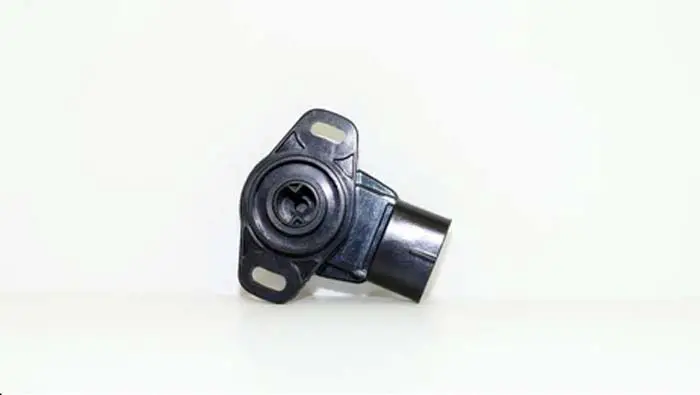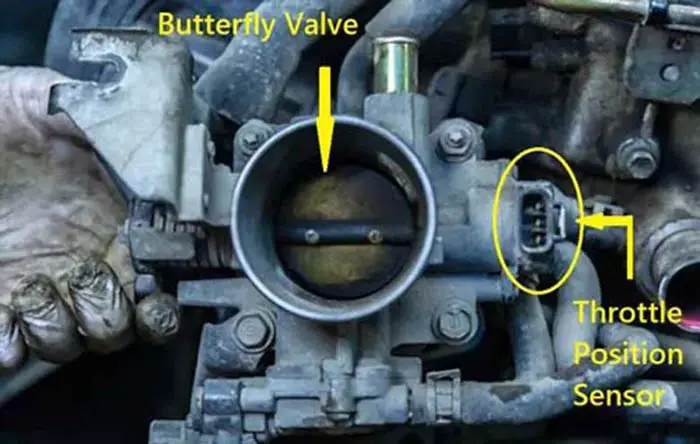
The throttle body controls the amount of air entering the engine cylinder. It uses a valve called a butterfly or throttle valve to control the flow of air into the engine.
A sensor called the throttle position sensor is used to determine how far the throttle valve is open.
In this article, you are going to learn everything about what is throttle position sensor and their types.
Related Post: 9 Symptoms Of A Bad Throttle Position Sensor You Never Knew
A Little Background
First, I want to share with you a little background about the throttle position sensor so that you understand the topic well. It measures the movement of the throttle valve. There are two ways you can find out the movement of an object.
- Contact Type
- Non-Contact Type
In contact type, the movement-finding tool is the potentiometer. The potentiometer is a variable resistor, which measures the voltage difference. In non-contact type, movement-finding tools are Hall Effect and inductor-type sensors.
These sensors are used to find out the movement of something without having a physical connection. These types of sensors are used especially in wheel speed sensors (ABS Sensor), and cam or camshaft position sensors for calculating the revolution of the rotating (RPM) shaft.
What Is Throttle Position Sensor (TPS)
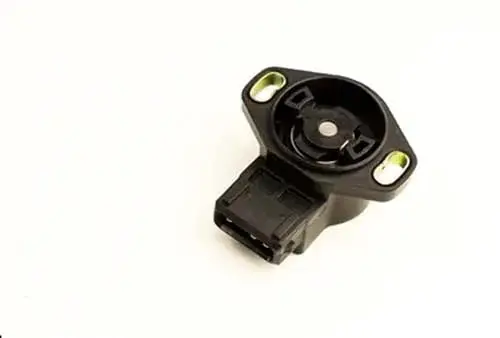
The throttle position sensor is a sensor, which measures the angle/position of the throttle valve (also called the butterfly valve). It senses the throttle valve movement and converts it into electronic signals. It is separately mounted on the spindle shaft of the throttle body or integrated into the actuator motor in electronic throttle control.
It monitors how far the throttle valve is open, which then creates the electronic signals and sends them to the engine control unit (ECU). These signals are used by the ECU as inputs for the fuel management system, this information combined with other bits of information such as temperature, engine RPM, and MAF sensor is used by the engine control unit to determine the correct amount of fuel that should be injected into the engine.
If the throttle valve is wide open, which produces a high electronic signal, so a high amount of fuel is permitted to the engine and vice versa. The throttle body is located between the intake manifold and the air filter. In the old days, there was a mechanical linkage between the accelerator pedal and the throttle body to operate the throttle valve.
When the driver would push the pedal, the throttle valve is used to open according to how far the accelerator pedal is depressed. Its disadvantage was, it used to wear out a lot and caused issues.
Related Post: How To Calibrate Throttle Position Sensor In 7 Easy Steps
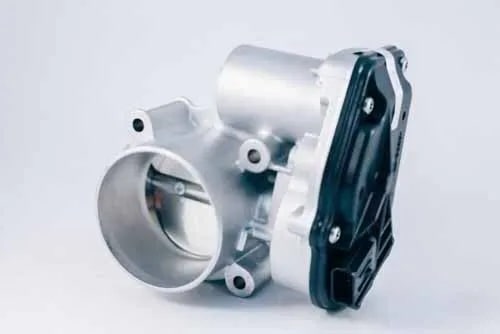
Nowadays, the mechanical system is replaced with an electric system called an “Electronic Throttle Control System” or a “Drive-By-Wire System”. In modern throttle control systems, it is used to detect the position of the throttle valve integrated into the actuator motor.
A throttle position sensor or TPS is an accelerator pedal sensor without a pedal arm. Its electrical circuitry is the same as the accelerator pedal position sensor.
This is an Alert
Some throttle position sensors are removable, and some are integrated into the electronic control throttle body.
Types Of Throttle Position Sensor
The throttle position sensor measures the position of the throttle valve in two different ways.
- Contact Way
- Non-Contact Way
1. Contact Type Throttle Position Sensor (TPS)
The contact type throttle position sensor is of potentiometer type. Below is the explanation of the potentiometer-type throttle position sensor (TPS).
Potentiometer Type Throttle Position Sensor (TPS)
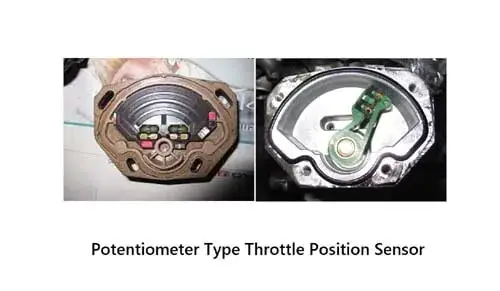
A potentiometer is used in the contact type of throttle position sensor same as in the accelerator pedal position sensor. A multi-finger wiper blade slides on a strip that changes the voltage and feeds to the ECU.
The ECU sends voltage (varying from 0 to 5 volts) to the potentiometer-type, as the throttle valve position changes, it also changes the voltage and sends output voltage (signal voltage) to the computer, upon which the ECU decides how much fuel to be left to the engine.
A potentiometer-type throttle position sensor has three wires, a ground, voltage, and an output voltage (signal wire). A dual-contact potentiometer-type throttle position has six wires, two for the earth, two for the input voltage, and two for signal wires.
Related Post: What Happens When You Disconnect Throttle Position Sensor
2. Non-Contact Type Throttle Position Sensor (TPS)
Non-contact type throttle position sensor is of two types, hall effect and inductive type. Below is an explanation of both types.
Hall Effect Type Throttle Position Sensor (TPS)
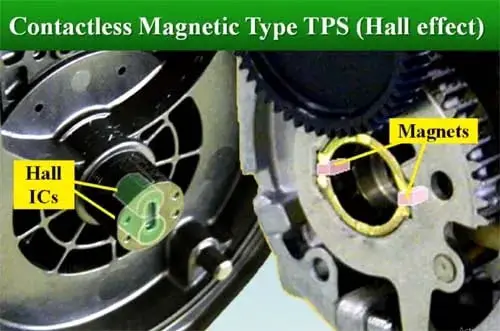
These sensors consist of magnets and Hall IC circuits. When the throttle valve position changes, it changes the magnetic flux in the Hall Effect sensor and is sent to the ECU to determine the amount of fuel sent to the engine.
The Inductive Type Throttle Position Sensor (TPS)
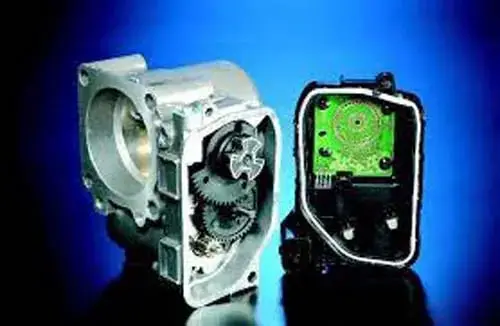
The inductive type throttle position sensors consist of a rotor and stator. When the throttle valve position changes, it produces voltage, which is sent to the computer as input for the amount of fuel to be injected into the engine cylinder. They are usually integrated into the electronic throttle control system.
This is an Alert
In the Hall Effect and inductive type sensor, there is no physical connection, hence there is no wear and tear, and has a long life
Frequently Asked Questions (FAQs)
The throttle position sensor is responsible for monitoring the position of the throttle. It does this by sending a signal to the engine control unit. The engine control unit then uses this information to determine how much fuel to inject into the engine. This helps to ensure that the engine is operating at its optimum efficiency.
Technically, you can drive with a bad throttle sensor. However, a bad throttle sensor can cause a rough idle, and a lack of power while accelerating. When the throttle sensor is not working properly, it can cause the engine to run erratically. This can lead to the engine stalling or running very roughly. If you are driving with a bad throttle sensor, it is important to be aware of the potential problems that can occur.
Sign Up

